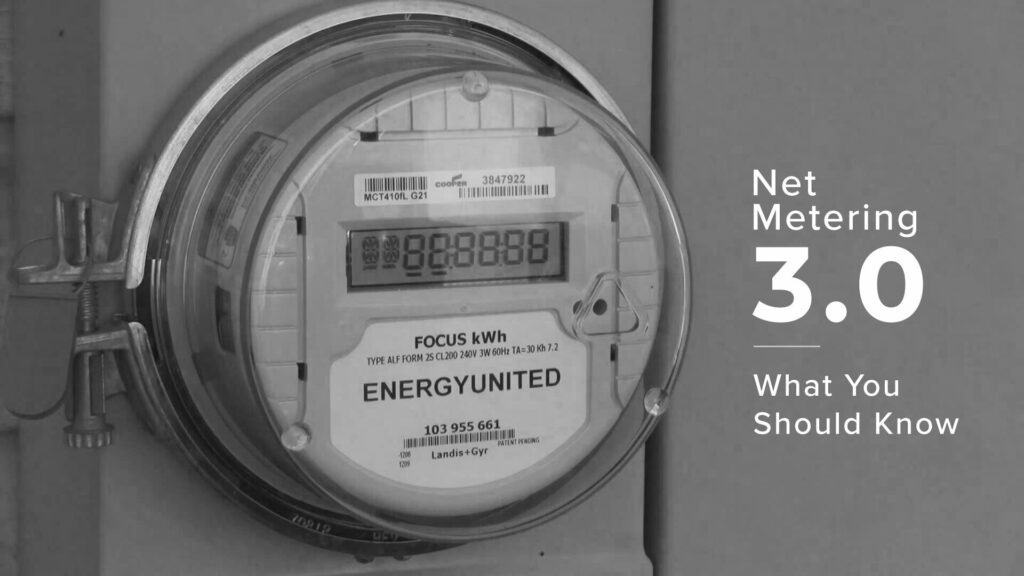What is NEM 3.0 and How Will it Impact California Solar Owners?
By homesolarsessions | Dec 15, 2023
ShareTweetShare
Updates regarding legal action seeking to overturn NEM 3.0:
On May 4, 2023, three environmental groups filed a lawsuit claiming the CPUC failed to consider the full benefits of rooftop solar. The lawsuit seeks to overturn NEM 3.0 and have the CPUC devise a new solar billing policy. Hearings began on December 13, 2023, with oral arguments over whether solar billing policies should consider the “societal benefits” of rooftop solar, as reported by Sammy Roth of the LA Times.
Following years of policy skirmishes, revisions, and a mad dash to grandfather systems into the previous net metering plan, a new solar billing structure — known as NEM 3.0 — is in effect for California’s three investor-owned utilities. NEM 3.0 features a 75% reduction in export rates (the value of excess electricity pushed onto the grid by solar systems), thereby reducing the overall savings and increasing the payback period of home solar. This new policy was designed, in part, to encourage homeowners to pair battery storage with their solar panels to become more self-sufficient and contribute to a more resilient electricity grid. While NEM 3.0 is undoubtedly less favorable to solar-only customers than previous net metering policies, it’s important to note that NEM 3.0 solar systems in California will still largely provide greater energy cost savings than in any other state, especially when paired with home battery storage.
NEM 3.0 key takeaways:
Solar systems placed in service prior to April 15, 2023 will remain under their existing net metering policy for 20 years from their interconnection date
Solar systems under NEM 3.0 billing will earn, on average, 75% less for the excess electricity they push onto the grid
Under NEM 3.0, the payback period for solar and battery storage systems will be roughly equal to the payback period of solar-only systems
Compare solar and battery quotes from trusted local installers.
In this article, we’ll break down:
What is NEM 3.0 solar billing?
What does NEM 3.0 mean for solar in California?
The utilities’ perspective
When will NEM 3.0 take effect?
Frequently asked questions about NEM 3.0
Let’s dive in with a quick review of how net energy metering works.
What is Net Energy Metering (NEM)?
Net Energy Metering describes a billing structure between utilities and homeowners with solar. Under net metering, solar owners earn credit for the excess electricity they push onto the grid when their panels produce more electricity than their home uses. This credit is used to offset the cost of the electricity they pull off the grid when the sun isn’t shining. Net metering policies have traditionally had a one-t0-one offset. That means the price of a kilowatt-hour (kWh) of electricity pushed onto the grid was equal to the price of a kWh pulled off the grid. Under this structure, solar owners with systems designed to produce the same amount of electricity as the household consumes essentially replace their utility electricity bill with a lower monthly payment on their solar equipment. Over the 25-year warrantied life of a solar system, this leads to energy cost savings in the tens — or hundreds — of thousands of dollars.
What is NEM 3.0 solar billing?
NEM 3.0 — also known as the Solar Billing Plan — is a new version of the net energy metering policy that took effect on April 15, 2023. It applies to utility customers in the territories of California’s three major investor-owned utilities (IOUs):
Pacific Gas & Electric (PG&E)
Southern California Edison (SCE)
San Diego Gas & Electric (SDG&E)
It’s important to note that NEM 3.0 is not retroactive. So, solar systems installed under NEM 1.0 or NEM 2.0 will remain under their current policy for 20 years from the date they received permission to operate (PTO).
NEM 2.0 vs NEM 3.0
NEM 2.0 was the previous net metering policy offered by California’s investor-owned utilities. The biggest change between NEM 2.0 and NEM 3.0 is the value of export rates — i.e. the price of excess electricity produced by solar systems. Under NEM 2.0, the value of solar exports is based on retail rates, so a kWh of electricity pushed onto the grid was worth the same as a kWh of electricity pulled off the grid. Under NEM 3.0, residential solar export rates will be based on an “Avoided Cost Calculator” and are closer to wholesale rates for electricity (what utilities pay for electricity). We’ll explain how this works in a moment, but the big thing to know is, on average, NEM 3.0 export rates are around 75% lower than the export rates for NEM 2.0.
Lower export rates mean longer payback periods and less bill savings for solar owners under NEM 3.0. Here’s how that looks based on actual bids generated on the solar.com marketplace.
… (content continues)


Pingback: Understanding NEM 3.0 and its Implications for Solar Owners in California – Home Solar Sessions
Thanks for sharing. I read many of your blog posts, cool, your blog is very good.
Thank you for your sharing. I am worried that I lack creative ideas. It is your article that makes me full of hope. Thank you. But, I have a question, can you help me?
Explore the ranked best online casinos of 2025. Compare bonuses, game selections, and trustworthiness of top platforms for secure and rewarding gameplaycasino bonus.
Thank you, your article surprised me, there is such an excellent point of view. Thank you for sharing, I learned a lot.